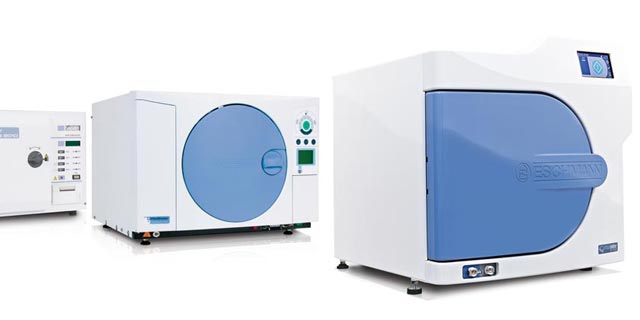To celebrate Eschmann’s 50 years in the world of dental infection control, Dental Review looks back to the 1970s in the second of this weekly series
In stark contrast to the “Swinging Sixties” in Britain, the 1970s are often recalled as a tumultuous time characterised by political and economical upheaval. The UK saw the decade out with the “Winter of Discontent”. A series of public service strikes in 1979 left communities swamped by piles of rotting rubbish and plunged into total darkness. On the plus side, the seventies also spawned platform shoes, bell-bottom flares, wide collars, kipper ties, Abba, disco, and The Bay City Rollers – so it wasn’t all bad.
Within the world of technology, the 1970s was a ground-breaking time delivering early models of many of the gadgets we use on a daily basis today. The popularity of Sir Clive Sinclair’s 1972 Executive first pocket calculators brought them into the mainstream. This was the first model slim enough to fit in a pocket and was also the first calculator in the world to be powered by button cells that could be pulsed off and on to save battery life.
Liquid Crystal Display (LCD) was used for the first time in a consumer product when James Fergason took the research done in 1888 by Austrian botanist Friedrich Reinitzer into the cholesterol extracted from carrots, and further examined these properties. The result was the first LCD watch, produced by Fergason in 1972.
Advances in computer technology were made in the 1970s too, with the first word processor, the Wang 1200 designed by Harold Koplow in 1971. The prototype of the first digital camera also emerged in 1975 when Steven Sasson devised a cumbersome, box-styled camera that weighed 8lbs and captured black and white images on a cassette tape with a resolution of 0.01 megapixels. Although this tool never went into production, it counts as the first-ever digital camera, which would then be developed and modified paving the way for the digital image devices we have at our disposal today. Innovations such as this prompted Francois Duret to adapt digital technology to dentistry, performing digital impressions directly into the mouth or indirectly on models. These findings progressed and spread to the computer-assisted manufacturing (CAM) of dental restorations, with digital data being transferred to a production-milling unit to fabricate restorations. The 70s were hailed as a period of great innovation.
During the 1970s, clinicians were also becoming much more aware of the dangers of spreading infections in medical settings. Dr James Joseph Crawford, Ph.D, who was a researcher and professor at the University of North Carolina, performed a landmark study in infection spread and named it “If Saliva Were Red”. This short video visually brought cross-contamination in dentistry to the fore. It depicts real dental professionals walking viewers through patient seating, examination and ultrasonic scaling, carefully presenting common infection control and safety mistakes with red dye and colourfully demonstrating the pervasive contamination that can result from routine dental treatment. This study was effective in showing how proper precautions protect both dental workers and patients. This pioneering work proved to be particularly pertinent when an American study in 1978 showed that dentists were three times as likely as the general population to contract the blood borne virus, Hepatitis B. From this moment on, infection control protocols within dental settings gained prominence.
It was also at the start of this decade that preventative dentistry began to be recognised in the UK. The charity, the British Dental Health Foundation was formed in 1971, by a group of dental professionals who surmised that preventative dentistry constituted the most effective way of improving the nation’s dental health. Their first campaign promoted the message that “Teeth are for Life” which they spread widely to the British public. Along with this shift in emphasis on preventative dentistry, better dental solutions were found for maintaining the health of natural teeth. After the discovery that fluoridated water improved dental health significantly in the 1960s, further developments saw the majority of toothpastes also containing fluoride by the end of the 1970s. Additionally, restorative dentistry was given a huge boost by the introduction of conventional glass ionomer cements in 1972.
Many of the dental innovations of the 1970s helped to direct the profession towards the revolutionary methods and technological advancements of today. Without the scientific discoveries made in infection control, we wouldn’t have the exemplary hygiene standards present in today’s practices.

The Little Sister autoclave, first introduced in 1966, was just the start of Eschmann’s journey, firmly setting its benchmark standards in infection control. For the past 50 years, the company has continued its quest towards excellence.
The all-inclusive package with each Little Sister, together with lifetime breakdown cover and annual validation are just two of the benefits offered as standard today. For more information visit www.eschmann.co.uk, or call 01903 753322

References: Click on the highlighted text





















